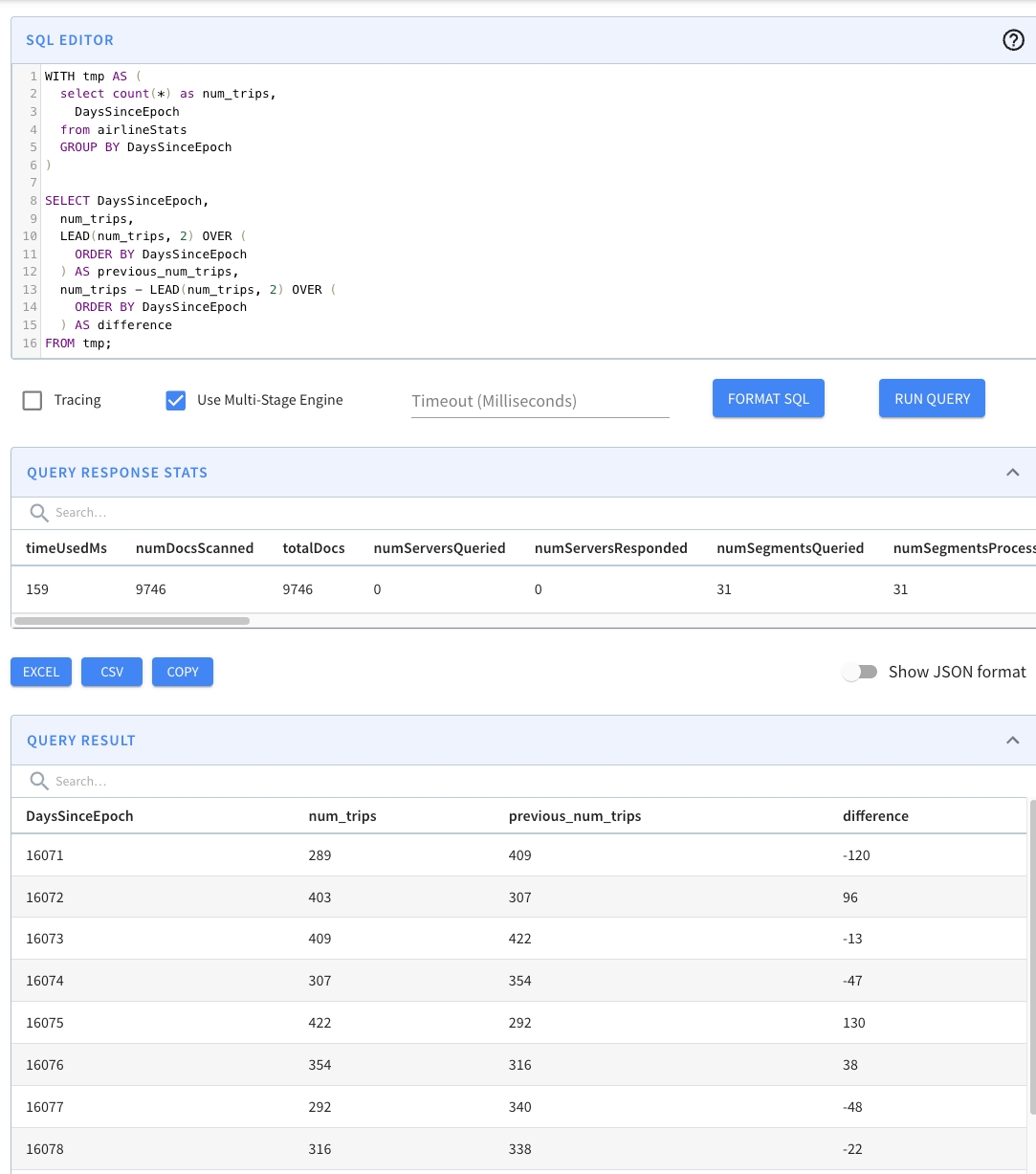LEAD
This section contains reference documentation for the LEAD function.
Returns the value from a following row in the same result set, based on a specified physical offset. It can be used to compare values in the current row with values in a subsequent row.
Signature
Arguments
expression: The column or calculation from which the value is to be returned.
offset: The number of rows before the current row from which to retrieve the value. The default is 1 if not specified.
default: The value to return if the offset goes beyond the scope of the window. If not specified, NULL is returned.
Example
Forecast next day's sales based on current data.
Anticipate the next payment amount for budget planning.
Identify potential increases in expenses or revenue.
Forecast next day's sales based on current data This example shows how to use the LEAD function to anticipate sales for the next day.
Output:
2023-02-14
200
180
2023-02-15
180
220
2023-02-16
220
NULL
Anticipate the next payment amount for budget planning This query retrieves the next payment amount for each transaction to assist in financial forecasting and budgeting.
Output:
416
2023-02-14 21:21:59.996577
2.99
4.99
516
2023-02-14 21:23:39.996577
4.99
4.99
239
2023-02-14 21:29:00.996577
4.99
6.99
Identify potential increases in expenses or revenue Utilize the LEAD function to examine monthly data and predict potential increases or trends in expenses or revenue for future planning.
Output:
1
2023
1000
1100
2
2023
1100
1200
3
2023
1200
NULL
Use with CTE:
Was this helpful?


